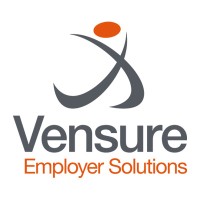Education
Written by
Please note the content is for informational purposes only and not to be relied on

4 Things to Know When Renewing Your Employee Benefits Plan
While benefits might seem like an added expense, they are one of your greatest assets when it comes to retaining your best employees. And with hiring expected to continue growing during the next year, it’s an important consideration for candidates.
Think about the cost, quality, and breadth of your employee benefits while assessing your renewal options for the coming year.
Cost is critical. Every dollar you save can help better position your business for any unknown impacts of the future. Even if the savings are small, every penny counts in the current climate.
The quality and breadth of plans cannot be ignored either. In an online survey conducted by The Harris Poll for Glassdoor, nearly two-thirds of respondents (both employed and unemployed, actively job-hunting) said that when seeking a job they hone in on benefits offerings in postings, just second to salary.
And nearly half reported that attractive benefits and perks would entice them to apply for a job. Overall job satisfaction is also linked with benefits satisfaction, as the Employee Benefit Research Institute found in their Health and Workplace Benefits Survey. They discovered that employees who reported being extremely or very satisfied with their benefits are more likely to say they are extremely or very satisfied with their jobs.
As you assess your benefits options for the next year, here are a few things to think about.
1. Is it Possible to Reduce Benefits Plan Costs?
In most cases, the benefits you offer ultimately come down to cost and availability. If you’re like most businesses you’ve probably worked with a broker for years or perhaps even worked directly with the carriers.
How long have you approached it this way, and have you ever explored alternatives?
You may feel like “it is what it is” and that you don’t have much control over what’s available to your business. Or maybe it was working well enough in the past that you felt it wasn’t worth the effort to explore different options. But there are other options out there, and with cost control being critical right now, every dollar you can save is important.
-
Working with a Professional Employer Organization (PEO). These HR service providers not only handle every aspect of plan assessment and negotiation, but they also give small businesses a unique advantage. By pooling together, the businesses they serve (and thus a larger total # of employees), they get access to plans and rates that are normally reserved for large corporations. And as HR advisors, they’ll help you construct a benefits suite that best matches your cost/quality objectives.
-
Look into other benefits you’re offering that may now be less important to your team. Things like transportation may have been interesting in the past, but lose their value if employees are still operating remotely. Trimming extraneous items can help you save money or allow you to shift it to more desirable benefits like telehealth or at-home fitness programs.
2. How to Support Employee Health (Physical and Mental)
Having healthy employees could make or break your business. And that means both physical and mental health.
Having plans that employees understand and are willing to use (e.g. offer ways to reduce out-of-pocket expenses) means they’ll proactively seek care when necessary. It also puts them in a better state of mind knowing they’ll be taken care of if something goes wrong.
As an employer, you not only provide a salary but are also increasingly asked to be an integral part of your employees’ well-being, ensuring personal needs are both understood and met.
It’s important to understand what your current health benefits plan(s) offer employees surrounding mental health diagnosis and treatment options, including access to in-person, as well as virtual evaluation, decision support, and treatment options.
Recognize that Flexible Spending Accounts (FSAs), Health Savings Accounts (HSAs), and Health Reimbursement Accounts (HRAs) offer oftentimes good options for employees to finance eligible mental health care expenses. Identify where your benefits may fall short of current standard offerings and prioritize which aspects you want to change in the year ahead.
3. Employee Financial Concerns Are Increasing
While specific financial concerns differ by individual and generation, they impact all employees, their families, and their performance at work. These financial concerns are heightened by the economic and personal impacts of recent inflation and a staggering economy.
Employers have previously responded to the financial needs of their employees by offering:
-
Higher matching for 401(k) programs
-
Access to financial wellness assessment tools and customized advice
-
Education loan assistance
-
Tuition assistance for employees, as well as dependents
-
College coaching programs
-
Financial debt counseling, as well as coaching and education regarding the prevention of financial distress
-
More paid time off (PTO); unlimited PTO models
-
Employee discounts (gym memberships, movie/theater tickets, travel booking services, and mobile coupons)
If you aren’t already offering some of the above, this is an easy way to show your employees you care about their well-being. But you may be asking, what about the cost? This is why it’s critical to find a way to reduce your overall costs so you can either continue offering these benefits or use the money you saved to start offering them.
4. Technology Leads to Efficiency
The use of technology continues to expand across every facet of our workplace experience, helping boost benefits utilization, track and guide employee development, and facilitate greater collaboration, among other key outcomes. With social distancing still at the forefront, most employers are looking for ways to continue running their business while reducing face-to-face contact when possible. And, if you can simplify benefits enrollment and plan selections via software, even better.
Employees across all generations have increasingly come to expect that the technology and experience they use in the office will mirror the technology they use in their personal lives – with the same level of personalization, rapid response time, and centralized access for managing all aspects of life.
Are you handling benefits enrollment and updates through paper forms? If you use software today, is it cumbersome or outdated? Both situations can lead to poor efficiency, errors, and time spent on things that could be spent more productively elsewhere. Not to mention a bad experience for your employees.
Access to modern technologies is now open to both large and small employers. With the introduction of cloud-based technology, SMBs now could utilize many of the same workplace technologies and software options that larger employers use to enhance the employee experience. And if you outsource with a PEO, even the parts that can’t be automated through software are taken off of your plate. In an uncertain economic environment, having that expertise in your corner is invaluable.
Understand what level of automation your current health benefits provider has and the supporting technology it can supply to your employees. Recognize that offering current technologies across all major functions of your business is critical to the employee experience and viewed by both prospective and current employees as an integral part of their workplace benefits package.
Reduce Costs and Improve Quality
As enrollment approaches it’s important to take a fresh look at how you put your benefits package together. How and where can you reduce costs? How do you maintain or improve the quality of your benefits at the same time?
As mentioned earlier, Professional Employer Organizations are a great option to consider – their buying power provides choices that wouldn’t normally be available to small businesses. Vensure Employer Solutions can help match you with the one that best fits your needs.
Please note the content is for informational purposes only and not to be relied on
